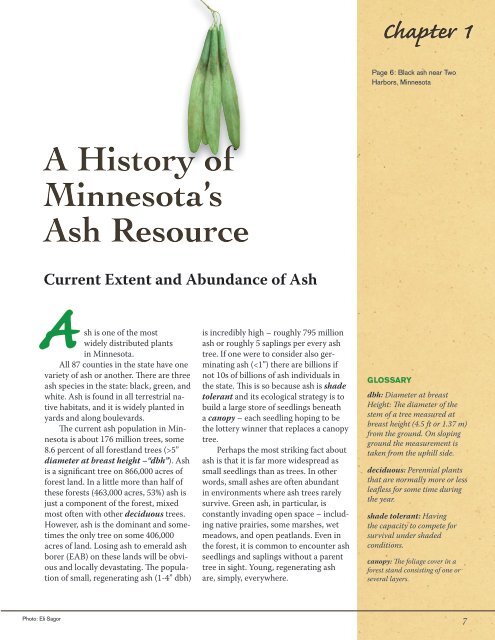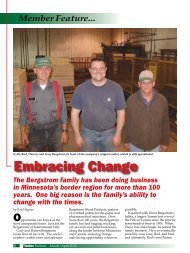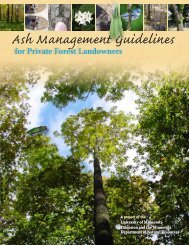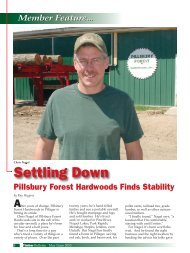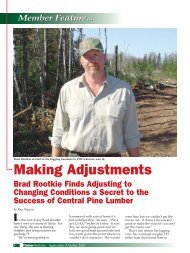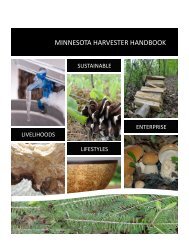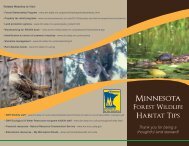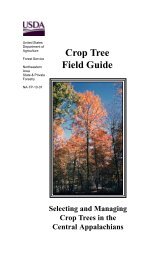Ash Management Guide for Private Forest Landowners
Ash Management Guide for Private Forest Landowners
Ash Management Guide for Private Forest Landowners
You also want an ePaper? Increase the reach of your titles
YUMPU automatically turns print PDFs into web optimized ePapers that Google loves.
Chapter 1Page 6: Black ash near TwoHarbors, MinnesotaA History ofMinnesota’s<strong>Ash</strong> ResourceCurrent Extent and Abundance of <strong>Ash</strong><strong>Ash</strong> is one of the mostwidely distributed plantsin Minnesota.All 87 counties in the state have onevariety of ash or another. There are threeash species in the state: black, green, andwhite. <strong>Ash</strong> is found in all terrestrial nativehabitats, and it is widely planted inyards and along boulevards.The current ash population in Minnesotais about 176 million trees, some8.6 percent of all <strong>for</strong>estland trees (>5”diameter at breast height –“dbh”). <strong>Ash</strong>is a significant tree on 866,000 acres of<strong>for</strong>est land. In a little more than half ofthese <strong>for</strong>ests (463,000 acres, 53%) ash isjust a component of the <strong>for</strong>est, mixedmost often with other deciduous trees.However, ash is the dominant and sometimesthe only tree on some 406,000acres of land. Losing ash to emerald ashborer (EAB) on these lands will be obviousand locally devastating. The populationof small, regenerating ash (1-4” dbh)is incredibly high – roughly 795 millionash or roughly 5 saplings per every ashtree. If one were to consider also germinatingash (


